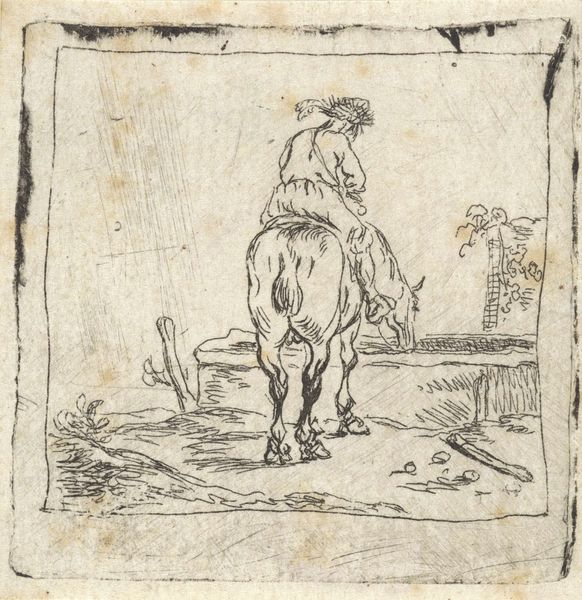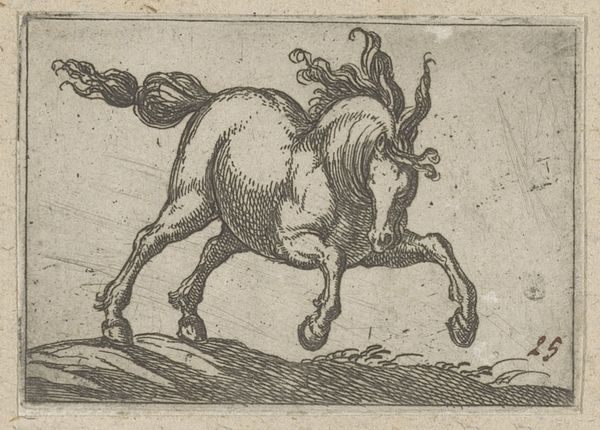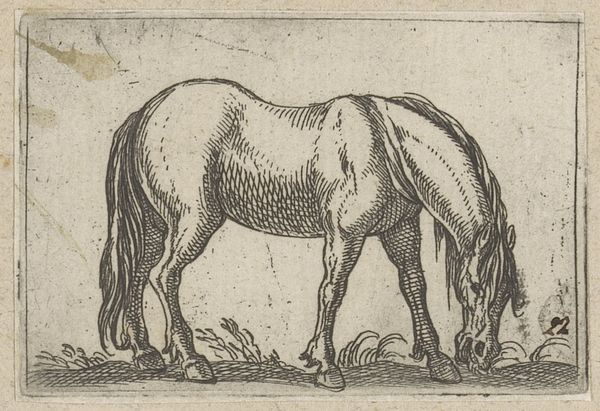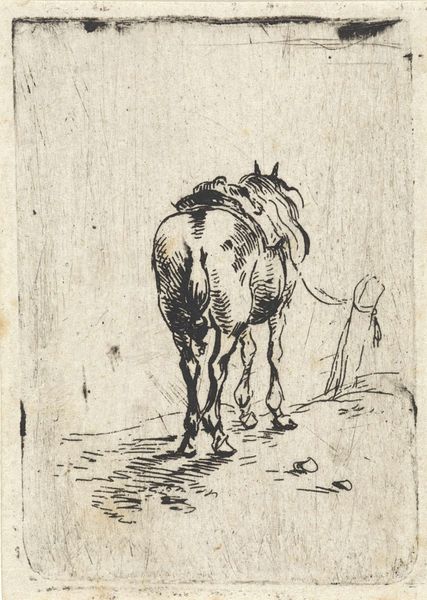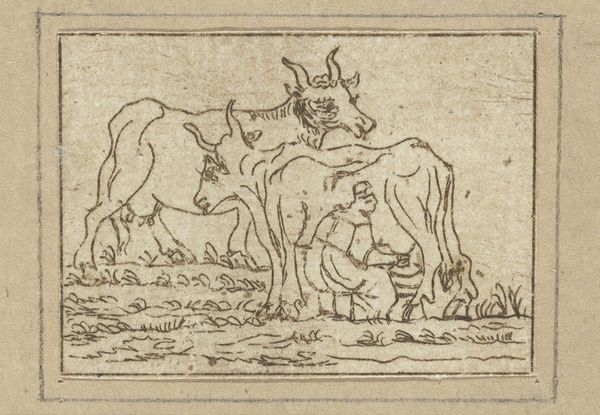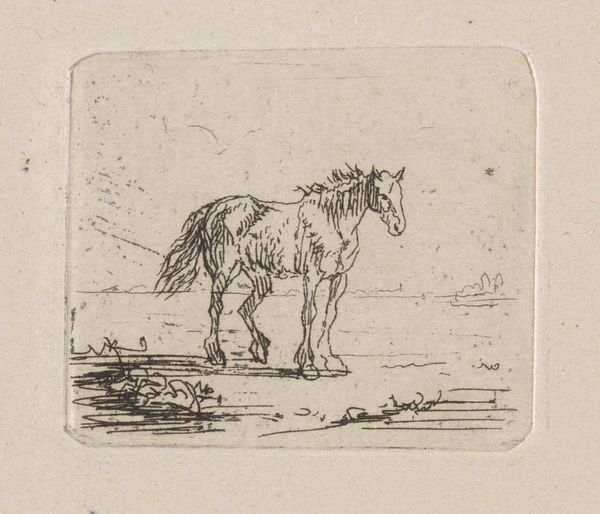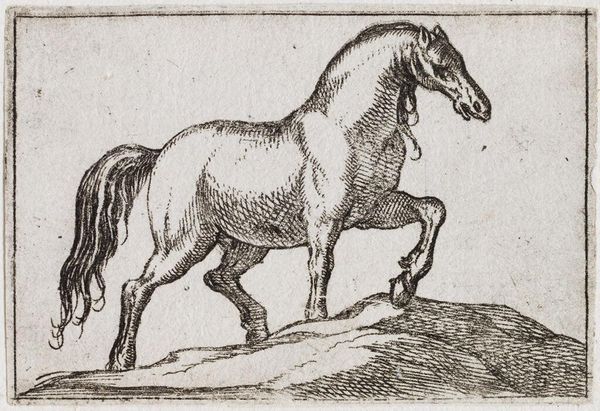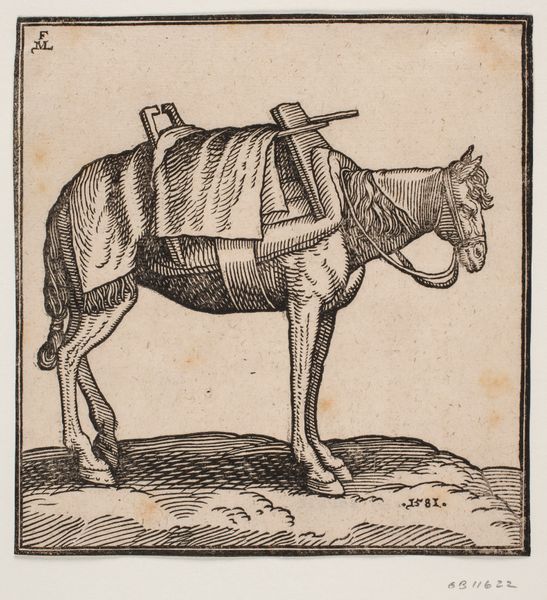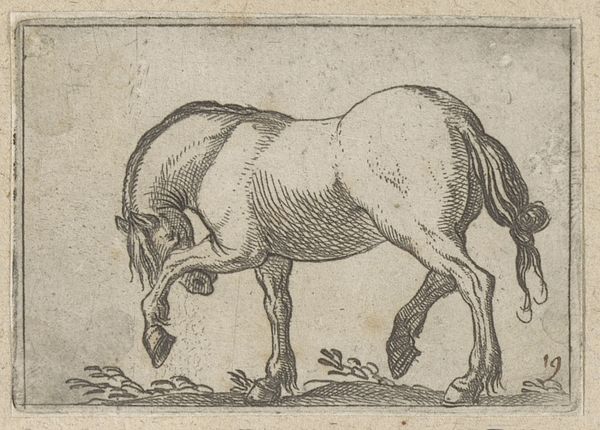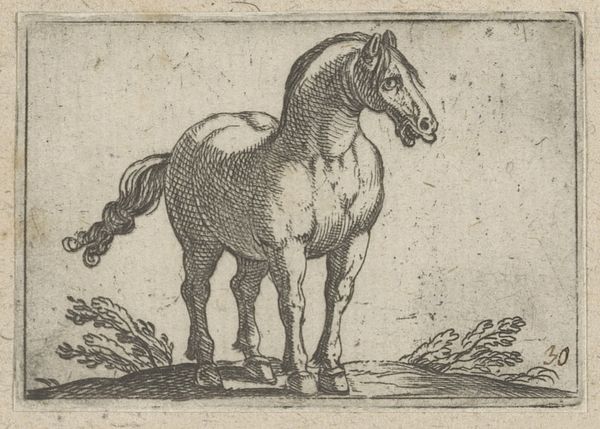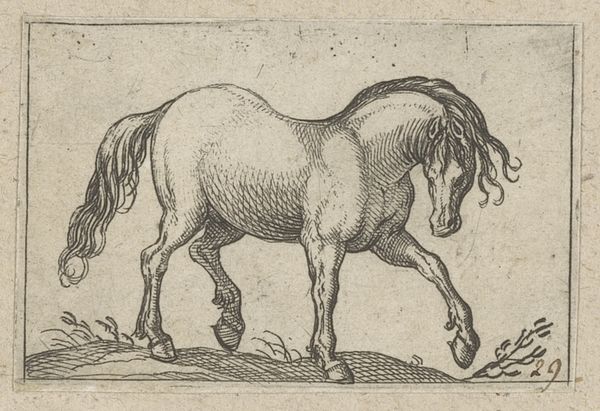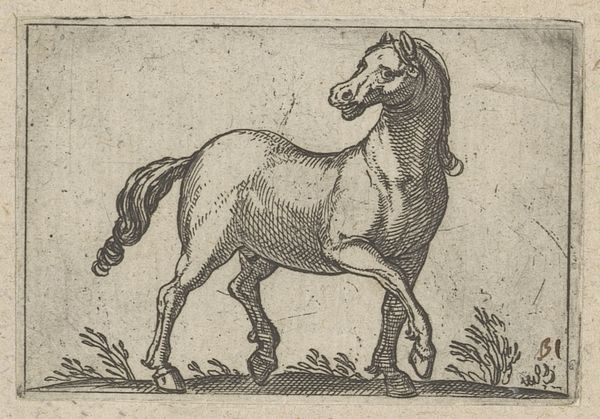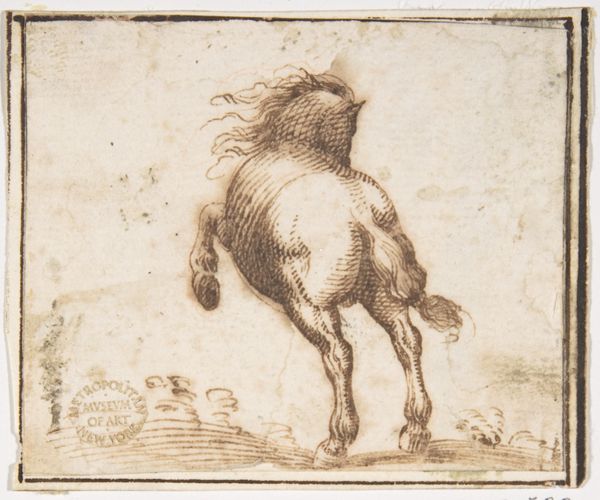
drawing, paper, ink
#
portrait
#
drawing
#
baroque
#
paper
#
ink
#
coloured pencil
#
horse
Dimensions: height 35 mm, width 32 mm
Copyright: Rijks Museum: Open Domain
Curator: Pieter Cornelisz. Verbeeck's ink drawing on paper, "Standing Horse Facing Left," likely executed sometime between 1620 and 1654, presents a seemingly simple subject. Editor: It’s instantly melancholic. There’s a palpable sense of stillness, almost resignation, emanating from the horse. Curator: Observe the precision of line and the artist's evident skill in depicting the animal's musculature and form, note the slight modelling to create volume with so few marks. It's a study in form and movement. Editor: I read it as something more. Horses were of course symbols of power, and nobility during this period. But there’s an undeniable vulnerability in the animal's posture, tethered, head slightly bowed. What is Verbeeck trying to communicate about power itself, especially within the Dutch Golden Age's shifting social dynamics? Curator: One might argue you're over-interpreting. The horse is merely rendered, not necessarily laden with heavy symbolism. It could just be that: a record. Editor: But isn’t that refusal to engage with potential historical or cultural context part of the problem? It was never *just* a horse in seventeenth-century Dutch art. Its symbolism extends from war to commerce, from wealth to…subjugation. And if the drawing is intended as a pure study of form, why tether the animal at all? That adds an additional conceptual layer. Curator: Fair enough. I concede that placing it within its socio-historical context illuminates further interpretations. Although a drawing, Verbeeck really captures that inherent nobility while hinting at other interpretations, which is quite powerful when we consider the limitations presented by its restricted scale. Editor: Absolutely. And perhaps its enduring impact lies in that ambiguity. We’re left contemplating the tension between freedom and restraint, both for the individual animal and, perhaps, for the broader societal structures of the time. It remains an invitation for us to explore further.
Comments
No comments
Be the first to comment and join the conversation on the ultimate creative platform.
